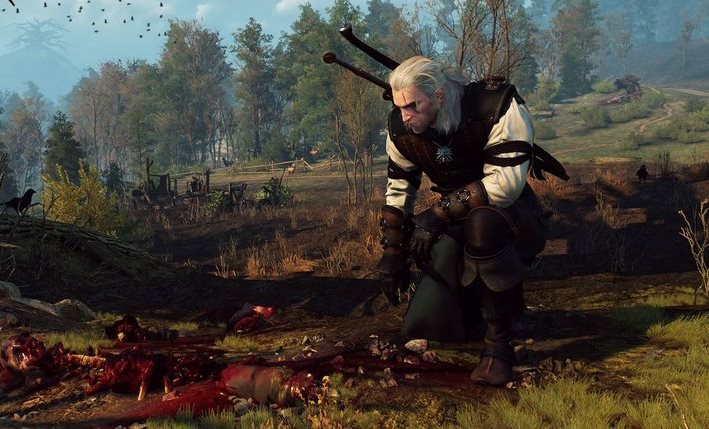The Witcher 3 patch 1.07: Geralt's new movement mode analyzed

It takes time to adjust to Geralt's seamlessly animated movement and combat patterns in The Witcher 3. While traversal and combat clicked for me eventually, it definitely left room for improvement—especially indoors. Geralt's large turning circle and casual saunter too often resulted in awkward wall collisions.
So it’s neat that CD Projekt RED has moved to address this with a whole new movement mode in its newly rolled out 1.07 patch. The ‘alternative’ responsiveness mode is not as seismic a change as some have been expecting. As a veteran of the vanilla movement mode, I didn’t feel like I had to relearn the game under these new conditions, and that applies for both controller and mouse and keyboard.
Still, I think these new settings will better suit someone who hasn’t completed the game with the default movement mode. I vividly remember disliking Geralt’s gait for a while, but now that I’ve spent hundreds of hours poking him around the Northern Realms it’s second nature. The alternative mode is something you’ll probably want to select immediately as a newcomer. It serves to make that learning curve a bit more manageable.
Overall, the new mode makes Geralt's movements less lifelike. All the graphical flourishes needed to make Geralt look realistic also make him respond slower to your button presses. With that in mind, the most stark difference with the new mode is the sharpness of Geralt’s turning speeds. In the below video, I’m pressing left (A) and right (D) at the same speed with both the ‘standard’ and ‘alternative’ movement modes. The latter demonstrates a much sharper turn than before.
As you might have noticed, it's not just Geralt's movement that has changed: the camera's reaction has adjusted too. Whereas the 'standard' setting allows the camera to slowly pan in the direction you're pressing, the alternative mode doesn't. Under the former circumstances, Geralt's quick directional changes aren't as sharp because the camera is hellbent on staying behind Geralt, thus requiring constant adjustment by the player.
On the otherhand, the alternative mode does the opposite in other situations. One difference with the alternative mode, only noticeable with a controller, is that the camera is stickier when Geralt makes sudden 180 degree turns. Geralt doesn't lose speed when making these turns either, as you'll see below:
Neither of these changes play into the combat in any measurable way. In fact, I couldn't notice any changes during fighting scenarios—Geralt is locked into a reactive stance unique to combat situations, and this does not feel tweaked at all. Below are the two settings demonstrated in combat. This is controller gameplay, though results were similarly identical using mouse and keyboard.
Keep up to date with the most important stories and the best deals, as picked by the PC Gamer team.
But as I mentioned above, it's Geralt's indoor life that benefits most from the new mode. That's largely thanks to the 180 degree turns he can now perform. This makes precision handling in smaller quarters a lot more feasible, and Geralt is now less likely to rub up against walls or shelves when making simple turns.
It's amusing that the solution to the indoor movement problem was to make Geralt superhuman, able to rapidly change direction with an unnatural twist, but that's essentially what CD Projekt has done. Whereas the default mode attempts to simulate the movement of a real-life man, Geralt is now a lot more game-y, if you want him to be. Views on whether that's a good or bad thing will vary, but it's all immaterial in the end, because it's completely optional.
For mine, I'm in the awkward and rare situation of not having a strong opinion either way. I definitely would have switched to the new mode upon release, but I can see the merits in CD Projekt's original vision. You know what? Both systems are great: the former if you're a staunch roleplayer, the latter if you come from a background of third-person action games. Go with your heart, fellow Witcher.

Shaun Prescott is the Australian editor of PC Gamer. With over ten years experience covering the games industry, his work has appeared on GamesRadar+, TechRadar, The Guardian, PLAY Magazine, the Sydney Morning Herald, and more. Specific interests include indie games, obscure Metroidvanias, speedrunning, experimental games and FPSs. He thinks Lulu by Metallica and Lou Reed is an all-time classic that will receive its due critical reappraisal one day.

